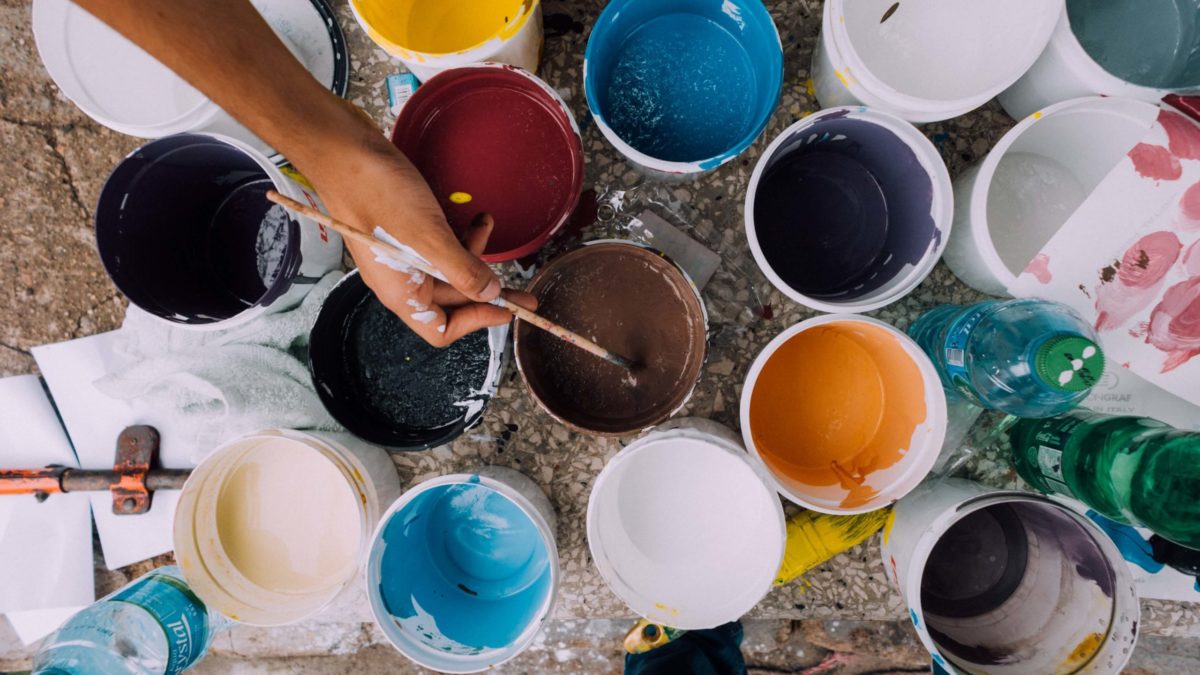Whether holding a brush or a pen, both painters and poets have a special knack for capturing a moment and turning it into something much greater—be it a story, a memory, or mythology. Visual art and poetry have a long history of working in tandem, as they’ve taken turns inspiring each other time and time again. To explore the overlap between these two vivid worlds, we’ve selected six pairs of poems and paintings that capture something special about a particular moment.
Painting: Sandro Botticelli – The Birth of Venus
Poem: Constance Urdang – “The Birth of Venus”
Poet and novelist Constance Urdang directly references this early Italian renaissance painting in her poem “The Birth of Venus.” The painting depicts the goddess Venus arriving at the shore after her birth. Mythology tells that she emerged from the sea fully grown. Urdang takes a pensive tone in her analysis of the work, imagining the goddess’s point of view as she emerges from the sea.
Painting: Rembrandt van Rijn – The Night Watch
Poem: Karl Shapiro – “Troop Train”
A painting from the Baroque period, The Night Watch is known for its dramatic use of light and shade (as well as its impressive size). It depicts a dutch militia group moving out. Chock-full of symbolism, the painting has inspired many musical works, essays, and even book covers. The painting makes a lovely pair with Baltimore poet Karl Shaprio’s “Troop Train,” which begins by describing a towns’ reverence for the troop, but goes on to describe the grim realities of war.
Painting: Georges-Pierre Seurat – Bathers at Asnières
Poem: Ned O’Gorman – “The Sunbathers”
Memories of a hot and hazy summer bring this painting and poem together, despite being created nearly a century apart. Post-impressionist painter Georges-Pierre Seurat paints a placid, riverside scene in this relaxing yet vibrant work. Complex brush strokes and a contemporary color palette build an image of sunbathers along the river Seine. O’Gorman’s “The Sunbathers” complements the scene as it describes people lounging by the river as “vivid angels on the sand.” A sense of stillness and heat permeates the poem.
Painting: Pablo Picasso – Les Demoiselles d’Avignon (The Ladies of Avignon)
Poem: Théophile Gautier – “Study in Hands”
This large oil painting sits at the forefront of the cubism movement. With unconventional, and even confrontational shapes in a two-dimensional picture plane, the controversial painting depicts four women with unique faces and frames. No poem is more suited to this work than Parisian writer Théophile Gautier’s “Study in Hands.” This romantic, and at times rousing poem brings the sharp angles, twists, and turns that exemplify Picasso’s work.
Painting: Frida Kahlo – The Two Fridas (1939)
Poem: Gloria Anzaldúa – “To Live in the Borderlands”
This surrealist painting by the famed Frida Kahlo is often thought to represent the artist’s dual heritage (as she had both German and Mexican ancestry). Two self-portraits of Kahlo, each sitting in a chair, in different dresses, are joined by a blood vessel that winds its way from hand to heart. Poet and scholar Gloria Anzaldúa has spent much of her career studying and writing about “the in-between” (or nepantilism). Her poem, “To Live in the Borderlands” exemplifies this crossroads.
Painting: Georgia O’Keeffe – Red Canna
Poem: Wendy Videlock – “Flowers”
Deeply inspired by the canna lily, O’Keefe created a dozen or more paintings of the plant from 1915 to 1927. Painted with vibrant red and orange hues, each piece exemplifies O’Keeffe’s appreciation for the curvature and color of the plant. While viewers have imposed many of their own interpretations onto the paintings, O’Keefe has said, “. . . you write about my flower as if I think and see what you think and see of the flower—and I don’t.” In much the same vein, Videlock’s poem “Flowers” remains open to interpretation. Her deft and minimal yet loving lines bring a sense of wonder to the natural world.




